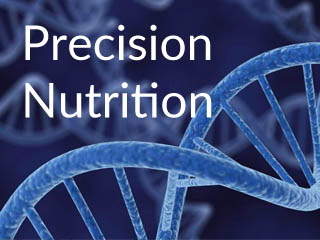Type 2 diabetes is a gradual disease that begins with insulin resistant. Poor eating and lifestyle habits may contribute to the onset of type 2 diabetes. Most type 2 diabetics are overweight, experience high blood pressure and/or high triglycerides and cholesterol. Genetics and family history can contribute to the risk for type 2 diabetes. Type 2 diabetes can be relieved and even eliminated through a balanced food and lifestyle plan that includes stress management and exercise. If type 2 diabetes goes uncontrolled, it can lead to many health complications and require oral medication and eventually injections of insulin under the skin.
Insulin resistance appears in individuals who have uncontrolled or excessive carbohydrate intake that is not in balance with what their body needs. Insulin resistance is also found in individuals who experience high surges of insulin due to poor eating habits, eating the wrong balance and types of foods, experience high levels of stress, have low activity levels and poor sleeping habits. All of these factors along with a genetic propensity can lead to type 2 diabetes.
Mechanism of blood sugar and insulin
The body requires sugars (glucose) for energy. When you eat a meal, your body breaks down the food into glucose, lipids and amino acids. These are all vital nutrients for cellular function and metabolism. If too many sugars are consumed, especially simple sugars, the body responds by releasing insulin. Insulin is a hormone secreted from the pancreas to unlock the door into the cells for energy. Insulin acts like a lock and key system for metabolism. Excessive amounts of blood sugars can lead to excessive amounts of insulin.
The cell has what’s called “insulin receptors” which allow the insulin to unlock the door and allow the glucose to enter the cell. Too much insulin can cause these receptors to become “tired” and malfunction. When this happens, the lock and key system is weakened and the sugars do not enter the cell. This causes blood sugars to remain high. The body then must compensate by releasing cortisol, which increases triglyceride levels and triggers the body to store the excess sugars as fat. Fatigue, low energy and hunger are results of this reaction. This disrupts many other systems in the body including the nervous and digestive systems. The key to fixing this problem is regulation of blood sugars and insulin secretion.
The reason I separate blood sugar response from insulin is because many don’t realize that lack of sleep and stressful situations can also cause the same response from the nervous system vs. consumption of food. Poor eating habits may only be one of many causes of the imbalance.
Exercise is linked to insulin sensitivity. Daily exercise can greatly reduce stress hormones such as insulin and cortisol by improving insulin receptor function and utilization of energy (glucose). Even something as simple as walking can greatly reduce the risk of type 2 diabetes.
Stress management is another piece of the puzzle. Worry, sadness, anxiety and fear are some of the most common stressors that contribute to higher blood sugar and insulin levels. Counseling, meditation and prayer are all great ways to help deal with acute (trauma) and chronic (daily) stress. The mind can sometimes be our worst enemy, but we have the power to change it.
Type 2 diabetes is diagnosed with the following blood tests:
Fasting blood glucose levels: >126mg/dl on 2 occasions
Ideal Ranges: Fasting blood sugar level should be in the range of 70 – 90 mg/dL (3.9 – 5 mmol/L). Older standards of “ideal” were in the ranges of 80-100. But studies are showing prediabetes linked to levels at a moderate 100 mg/dl. Other factors should be considered such as insulin levels, HDL, triglycerides, A1c tests, etc.
Hemoglobin A1c test (better indicator of long term control):
- Normal: > 5.7%
- Pre-diabetes: 5.7%-6.4%
- Diabetes: 6.5% or higher
Oral Glucose test: >200 mg/dL after 2 hours.
Random (non-fasting) blood glucose level: >200 mg/dL and accompanied by symptoms of increased thirst, urination, fatigue.
Another indicator that should be monitored is insulin levels.
Ideal Fasting Insulin Levels:
Less than 10 IU/mL
Risk Factors:
Low HDL <35mg/dl, high triglycerides of over 250 mg/dl. High triglycerides will actually lower HDL.
Belly Fat
High blood pressure
Similar symptoms of type 1 diabetes
History of Poly cystic Ovarian Syndrome (depleted cortisol levels influence other hormonal organs)
History of Gestational diabetes in women.
Diet Changes:
Choose lower glycemic foods. Glycemic index is a way to measure the effect certain foods have on blood sugars and hormone responses. Low glycemic foods tend to be from the vegetable category except for potatoes, carrots, yams, winter squash. This does not mean you cannot eat these vegetables, but you may need to reduce your portions or only eat them occasionally. Other low glycemic foods are fats and protein. Grains, fruits and fruit juices are higher glycemic foods. Choosing high fiber carbohydrates is a better option than processed breads, sugary cereals, pastas and white rice. High fiber options are whole grains, nuts, seeds, beans and legumes, and whole fruits.
Timing of meals is also important. Going for long periods of time without eating and skipping meals can actually do more harm than good. Starving the body tends to lead to large meals later in the day. This eating behavior causes large spikes and dips in blood sugar which leads to large surges of insulin and cortisol.
Depending on your metabolic type, you may need to add more protein rich foods along with fats to the diet to help slow the uptake of sugar in your food. Other metabolic types may need to change the types of carbohydrates being eaten and timing of meals. Most individuals need to get into a good habit of paying attention to the types and timing of foods as well as some lifestyle planning such as scheduling time to exercise. Most individuals need to stop eating processed junk food such as candy, cakes, muffins, donuts, cookies, sugary drinks, but also other refined carbohydrates such as bagels, large plates of pasta and white rice, sub rolls, breads and sugary cereals. Most individuals do not get enough green leafy vegetables nor do they get a variety. Most forget to eat a piece of fruit or have nuts/seeds and healthy fats in their diets. All of these mistakes can lead to metabolic imbalance and disease.
Type 2 diabetics can reverse their disease and live very healthy long lives if they make the necessary changes and seek proper support and education about their diet and behaviors. Try a Life coach or Wellness Nutritionist for support and guidance. It’s not just about the food.




 Providing nutritional therapy and lifestyle education for disease prevention and weight management....
Providing nutritional therapy and lifestyle education for disease prevention and weight management....